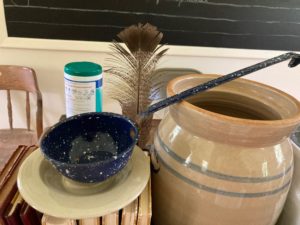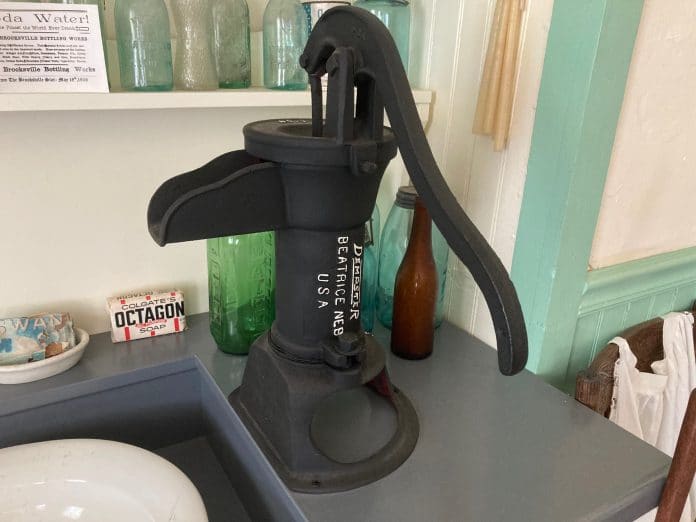We are used to turning on a faucet or tap when we need water. Faucets were in use back in the ancient Greek and Roman eras. However, indoor plumbing was not widely available in early American settlements.
The May-Stringer Museum has two cisterns under the house that collected rain water from the roof. Although we are not entirely certain of the early configuration of the plumbing in the house, there is a farmhouse sink and hand pump on exhibit in the kitchen. A small amount of water would have been set aside to prime the pump and then the handle would have been pushed up and down to draw water from the cistern.
The Countryman One Room Schoolhouse, on the other hand, does not have a source of water. If there was a nearby stream, one of the older boys would have been sent to bring a pail of water to the school. Otherwise, the teacher or a parent would have to transport a bucket or jug of water from home to fill up the ceramic water jar kept on the teacher’s desk. Sometimes a spigot was used to draw water into a cone shaped paper cup for each user. In other cases, a communal dipper was used with each student taking sips from the dipper. They didn’t worry about passing germs back then and they certainly didn’t use hand sanitizer!


